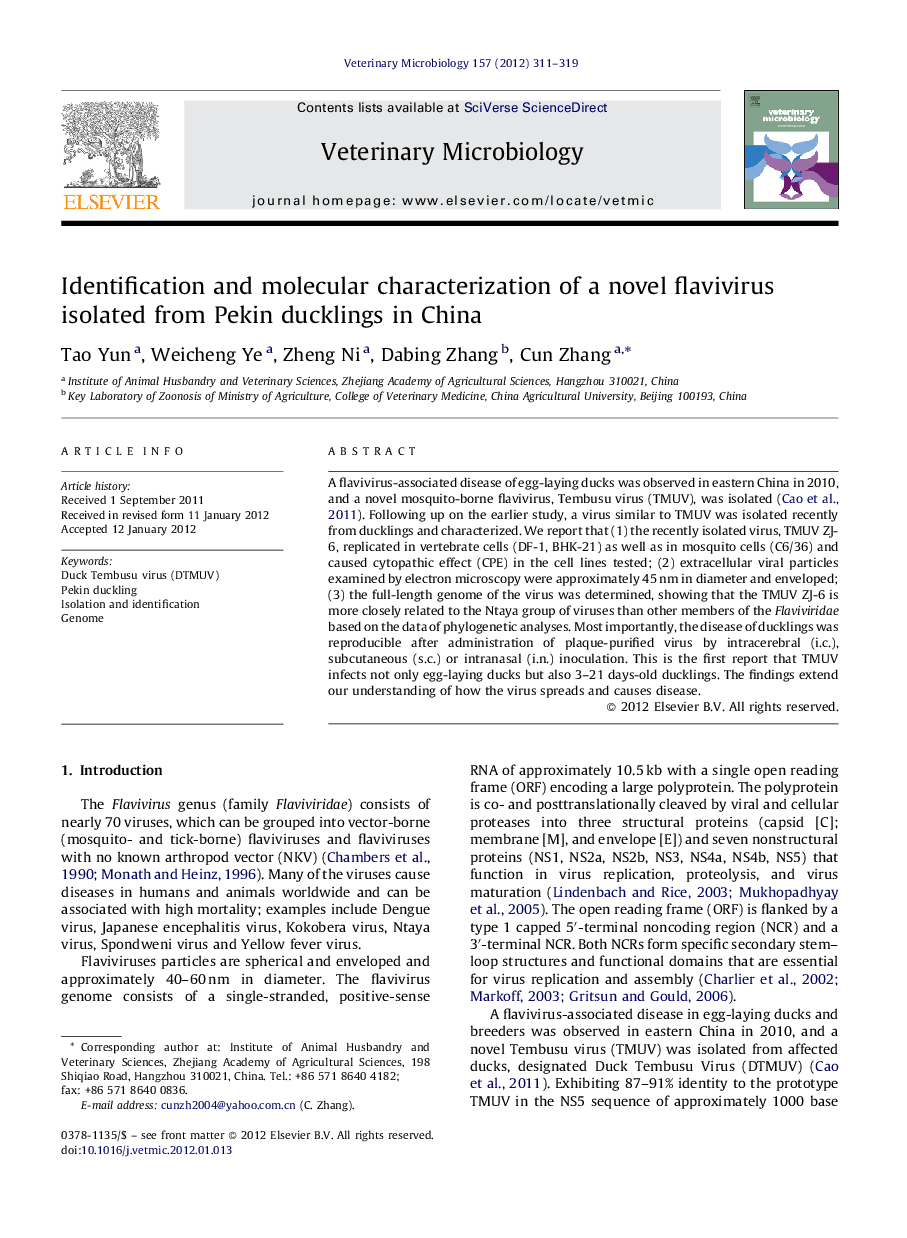| Article ID | Journal | Published Year | Pages | File Type |
|---|---|---|---|---|
| 2467253 | Veterinary Microbiology | 2012 | 9 Pages |
A flavivirus-associated disease of egg-laying ducks was observed in eastern China in 2010, and a novel mosquito-borne flavivirus, Tembusu virus (TMUV), was isolated (Cao et al., 2011). Following up on the earlier study, a virus similar to TMUV was isolated recently from ducklings and characterized. We report that (1) the recently isolated virus, TMUV ZJ-6, replicated in vertebrate cells (DF-1, BHK-21) as well as in mosquito cells (C6/36) and caused cytopathic effect (CPE) in the cell lines tested; (2) extracellular viral particles examined by electron microscopy were approximately 45 nm in diameter and enveloped; (3) the full-length genome of the virus was determined, showing that the TMUV ZJ-6 is more closely related to the Ntaya group of viruses than other members of the Flaviviridae based on the data of phylogenetic analyses. Most importantly, the disease of ducklings was reproducible after administration of plaque-purified virus by intracerebral (i.c.), subcutaneous (s.c.) or intranasal (i.n.) inoculation. This is the first report that TMUV infects not only egg-laying ducks but also 3–21 days-old ducklings. The findings extend our understanding of how the virus spreads and causes disease.
